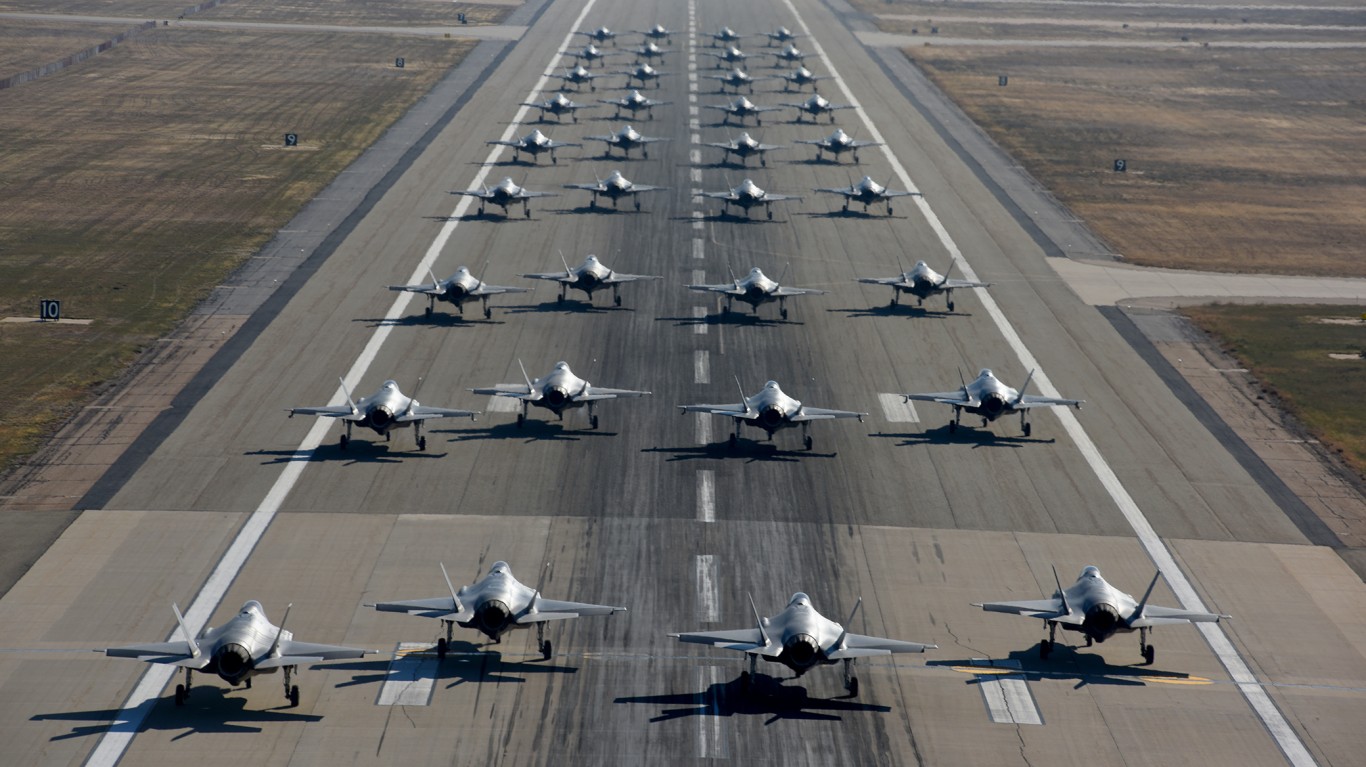
"In October of 1947, Captain Charles E. "Chuck" Yeager successfully broke the sound barrier for the first time. He flew over Rogers Dry Lake near Muroc Army Airfield (which was later renamed Edwards AFB in 1950) at 45,000 feet. Yeager zoomed over 700 mph, and a great sonic boom rang out across the Mojave Desert. Since this historical aeronautical event, countless others have accelerated past the speed of sound, and we continue to develop faster fighter jets."
"Several of America's supersonic jets are capable of reaching Mach 2 speeds (1,535 mph), while only a very few aircraft (like the SR-71, not a fighter jet) have reached Mach 3. In fact, the U.S. has no current operational fighter jet capable of Mach 3. To determine the fastest modern fighter jets, 24/7 Wall St. reviewed Military Factory's catalogs of third-, fourth-, and fifth-generation aircraft."
Charles E. 'Chuck' Yeager broke the sound barrier in October 1947, flying over Rogers Dry Lake near Muroc Army Airfield at 45,000 feet and exceeding 700 mph, producing a sonic boom over the Mojave Desert. Several U.S. supersonic jets can reach Mach 2 (about 1,535 mph), while only a few aircraft, such as the SR-71, have reached Mach 3. The United States has no current operational fighter capable of Mach 3. 24/7 Wall St. ranked third- through fifth-generation fighters by maximum speed using Military Factory data and excluded prototypes. The F-105 Thunderchief reached 1,390 mph, served from 1958 to 1984, and remains among the fastest tactical fighter-bombers. A 2025 update clarified fighter versus interceptor and historical details.
Read at 24/7 Wall St.
Unable to calculate read time
Collection
[
|
...
]